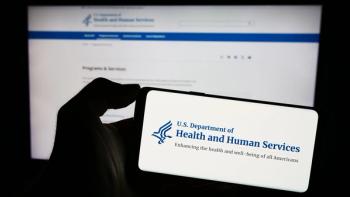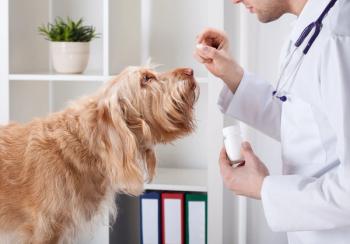
Improve tracking, reporting, labeling of pet foods, DVMs tell Senate panel
Washington - An improved system of tracking pet-food ingredients from the point of origin to the point of utilization, a better system of reporting contaminants and a truth-in-labeling initiative are steps that might go a long way toward preventing another pet-food crisis of the magnitude the nation is experiencing.
WASHINGTON — An improved system of tracking pet-food ingredients from the point of origin to the point of utilization, a better system of reporting contaminants and a truth-in-labeling initiative are steps that might go a long way toward preventing another pet-food crisis of the magnitude the nation is experiencing.
That's what two veterinarians who formerly worked in the pet-food industry told the Senate Agriculture Appropriations Subcommittee at a special hearing to look into the problem.
Dr. Elizabeth Hodgkins, DVM, who operates the All About Cats Health Center in Yorba Linda, Calif., and Dr. Claudia A. Kirk, associate professor of medicine and nutrition at the University of Tennessee College of Veterinary Medicine in Knoxville, joined three regulatory officials in giving testimony at the April 12 session.
"It is apparent that the U.S. food supply for pets and people is at risk for accidental toxin contamination and agriterrorism," Kirk told the committee, adding: "Contributing to the scope of the problem is poor tracking of contaminated ingredients within the marketplace."
She believes that is particularly true of imported ingredients, like wheat gluten and rice protein concentrate from China – both tainted with the chemical melamine – that are involved in the current crisis.
"While regulatory oversight helps protect foods produced within the United States, global suppliers are not under the same level of regulatory scrutiny," Kirk says.
Will it ever be possible to fully ensure that foods are safe?
"I doubt that we can prevent all contaminations. There are hundreds of thousands of toxins. Many are yet unknown and others are difficult to detect," Kirk told the panel. "We screen for the expected – and that does not include melamine.
"We'll probably never be able to guarantee 100 percent safety," she said, though she does give the current oversight system some good marks.
"In general, the system does an excellent job of testing. Despite that, toxins will show up here and there.
"There was no reason to suspect melamine (a substance used in plastics and fertilizer) in this case. Even if inspectors had been standing right there in the plant, it wouldn't have been detected."
A researcher and nutritionist in the pet-food industry before her teaching career, Kirk says "It's true that the industry is somewhat self-monitored, but the major manufacturers do work hard at testing and achieve a degree of safety that's equal to or better than what is done for foods for human consumption."
Flawed reporting system
Kirk isn't complimentary, however, about the current system for reporting problems, and believes that change is needed.
"Surveillance and centralized reporting by the Centers for Disease Control (CDC) have helped identify and contain food-borne diseases in people, but there are no such surveillance and reporting services available for companion animals," Kirk told the committee.
"One solution would be to establish a centralized site for veterinarians and consumers to report adverse events and catalog affected cases. Earlier detection, notification and withdrawal of tainted products will help prevent ongoing exposure."
Because reported problems currently go first to the manufacturer, Kirk contends, often too much time passes before a complaint reaches an agency such as the FDA, which in this instance then acted quickly.
"Nearly a month after the suspected ingredient was identified, manufacturers continued to discover products with the banned ingredient. This was an additional month of pet exposure to potentially toxic foods. Tracking of ingredients from the point of origin to final disposition will facilitate the rapid implementation of a total recall and thereby limit further exposure," Kirk said.
Hodgkins, who called for reform of the current pet-food regulatory system, believes that should begin with more accurate labeling.
"There can be no doubt that the present system of pet-food regulation is in need of meaningful reform. I have no doubt that such reform can be achieved, as a first step, by a truth-in-labeling initiative."
Hodgkins is vocal about the issue, calling some of the claims that appear on labels "ridiculous. There's no meaningful, scientific substantiation for many of them."
In her formal testimony, she told the panel she believes the present federal Food, Drug and Cosmetic Act already provides "the framework for meaningful regulation without new laws...What we need is adherence to the existing regulations and the simple, clear meaning of those regulations.
"It is important to note," she says, "that government guarantees that are ubiquitous on pet-food labels today cannot be found on any human food. No human food ... is allowed to bear such sweeping, broad guarantees of wholesomeness and nutritional adequacy. Unfortunately, these guarantees are not based on routine testing of individual ingredients by either the companies...or by the co-packers who often produce the foods at distant plants."
Aggressive and comprehensive: That's how Dr. Stephen Sundlof described FDA's response to the massive pet-food recall at a Senate subcommitee hearing in mid-April.
Labeling proposal
To address the problem, Hodgkins proposes that "AAFCO (the Association of American Feed Control Officers, whose stamp of approval on pet-food packages is construed by some to guarantee safety and nutritional adequacy) and the FDA adopt a presumption that all safety and nutritional adequacy claims for pet food are disallowed. Pet foods could be marketed without claims, as is the case with human foods, with purchaser and veterinarian aware that the product carries no label claims for safety or nutritional adequacy. Thereafter ... no implicit or explicit safety claims could be made without rigorous ingredient testing by the manufacturer and supplier certification. No long-term nutritional adequacy claims could be made without well-controlled clinical studies proving that adequacy to genuine scientific standards."
Hodgkins tells DVM Newsmagazine that she formulates and prepares foods for her own animals, and provides recipes for many of her clients, or otherwise recommends foods that don't contain wheat gluten.
Appearing before a congressional panel was a new experience for both veterinarians.
"This wasn't a whitewash. Everyone had a say," Hodgkins says. "I hope Sen. Durbin (D-IL, who led much of the questioning) will keep the pressure on for answers and for reform so that nothing like this is likely to happen again. I came away with a hopeful feeling."
Kirk says she had concerns the hearing "might turn out to be a witch-hunt, but I was pleasantly surprised. There was genuine concern to find a way to fix a broken system; it was a good fact-finding effort."
Durbin and Sen. Herbert Kohl (D-WI), the subcommittee chairman, led the probe into how the crisis unfolded and what might be done to prevent a recurrence.
Durbin says he was "appalled" at the three-week gap between the time Ontario-based Menu Foods Inc. became aware of animals becoming ill and the March 16 recall.
He told Dr. Stephen Sundlof, director of the FDA's Center For Veterinary Medicine, that "the frequency of your inspection of pet-food facilities (once about every three years) leaves something to be desired."
Two other officials testifying were Duane Ekedahl, executive director of the Pet Food Institute (PFI), and Eric Nelson, president of AAFCO.
Ekedahl says manufacturers, in addition to "our own high standards," work hand-in-hand with government regulators in all 50 states so that "pet food is perhaps the most highly regulated product on store shelves."
Sundlof says, "FDA's investigation has been aggressive and comprehensive. Within 24 hours of learning from Menu Foods of the problem, our investigators were on-site at the Emporia, Kan., plant, searching for the contamination source."
Sundlof says the pet-food industry "is responsible for adherence to good manufacturing practices. FDA conducts risk-based inspections targeted toward products that pose the greatest risk to public health. However, inspections cannot identify and contain every potential contaminant. ... FDA is working to develop a risk-based Animal Feed Safety System that describes how animal feed should be made, distributed and used."
He provided no additional details on the feed-safety system, or when or how it would be implemented.
Newsletter
From exam room tips to practice management insights, get trusted veterinary news delivered straight to your inbox—subscribe to dvm360.






